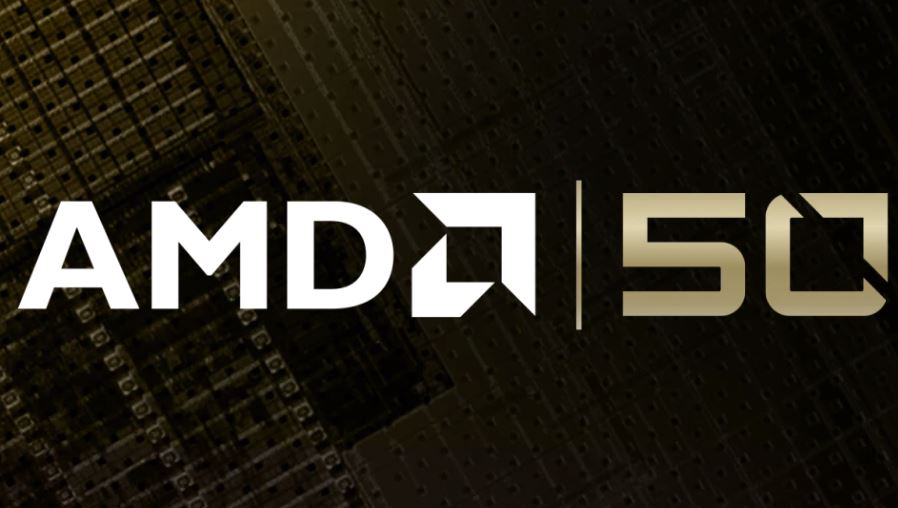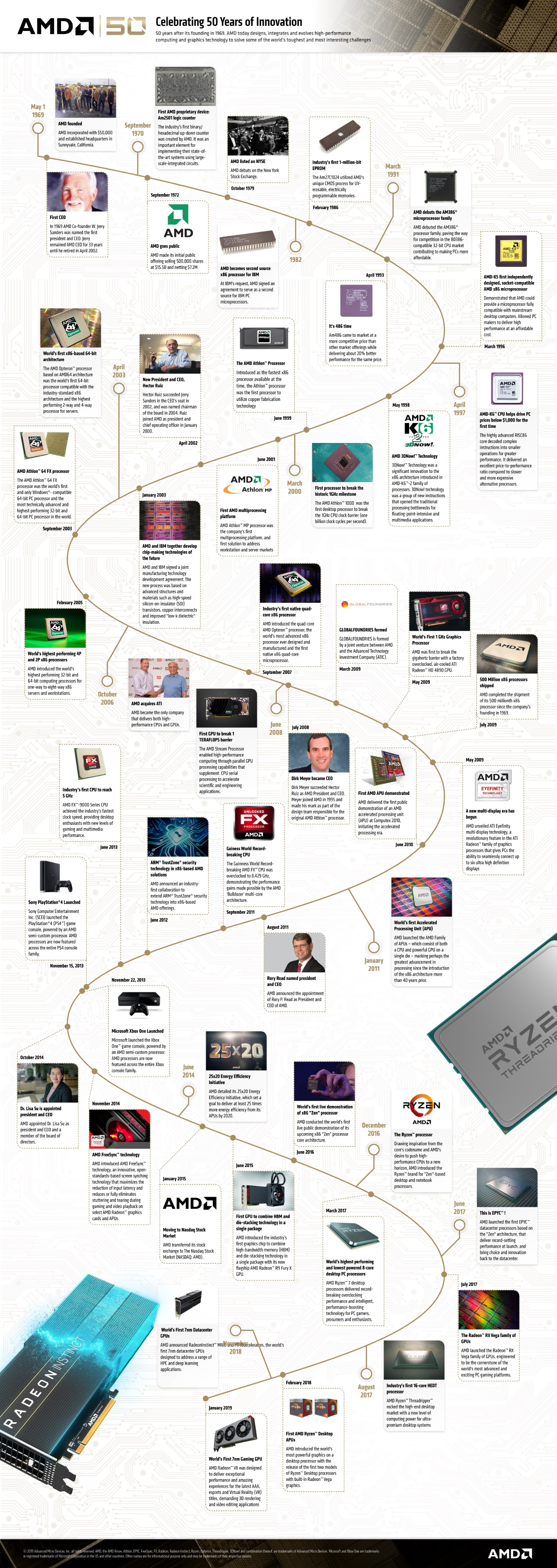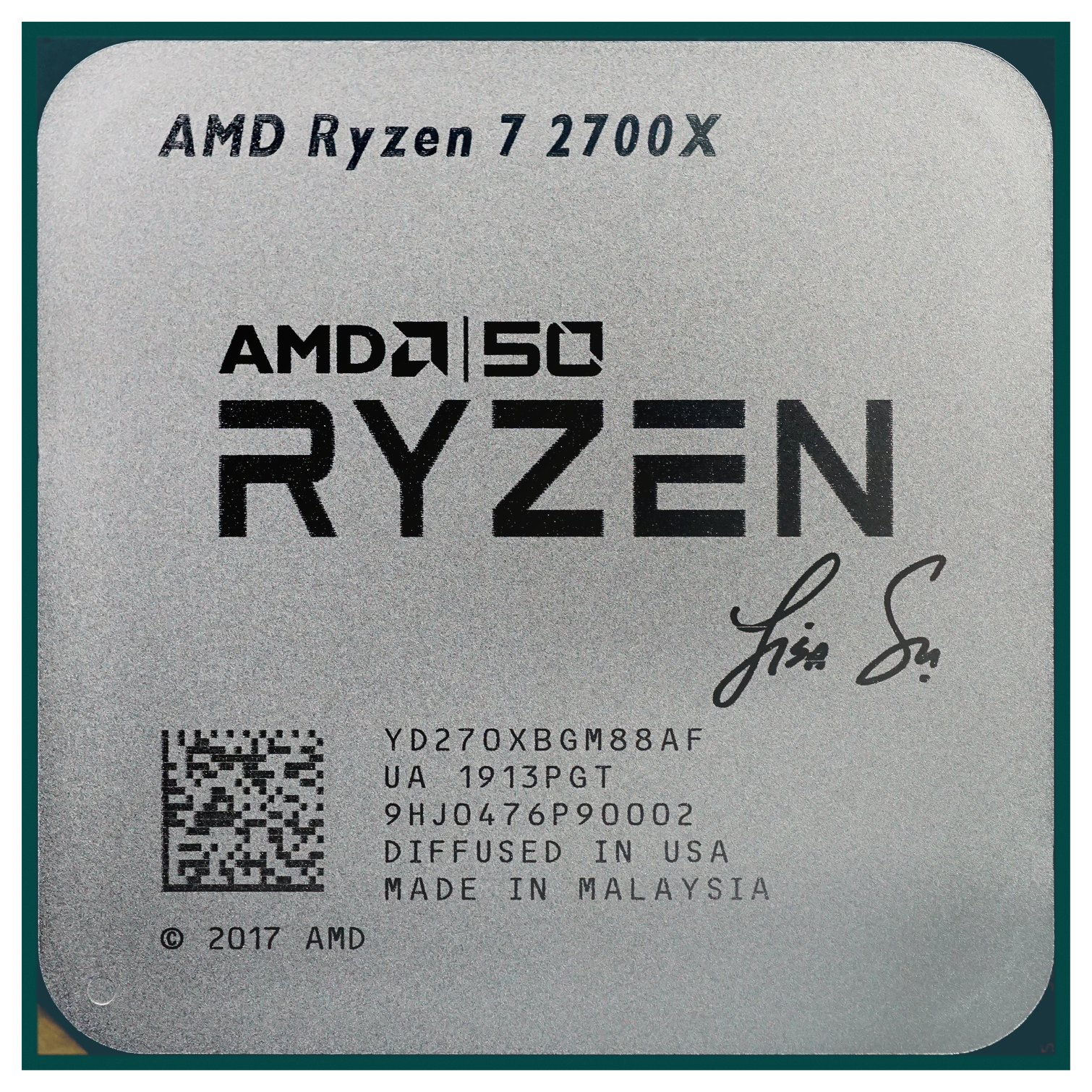AMD Celebrates Its 50th Anniversary
AMD turned 50 years old today. It hasn't been an easy half-century: the company has acquired companies, spun-off several businesses, and shut down numerous divisions to make sure it could survive when other processor companies didn't. Now the company founded by disgruntled Fairchild Semiconductor workers has proved it's not calling it quits any time soon despite--or perhaps because of--five decades of competition.
Here's a look at the last 50 years of Advanced Micro Devices.
CPU: Intel's One True Rival
AMD and Intel make for natural rivals. Both were founded by people who left Fairchild, with notable leaders being Jerry Sanders in AMD's case along with Robert Noyce and Gordon Moore in Intel's, within just one year of each other. Apparently the '60s weren't just about free love--they were also about semiconductor companies vying to lead a hot new industry. (The former gave us Woodstock; the latter modern computing.)
The rivalry stuck. At the high level, Intel and AMD are essentially the only companies offering x86 processors, giving them a duopoly over much of the traditional PC market. We recounted the history of these CPUs as well as some of the times AMD beat Intel at its own game:
- The History of AMD CPUs
- 10 Times AMD Beat Intel in the CPU Innovation Race
- The Ryze of Epyc: The AMD Supercomputer 2018 Slideshow
For now, AMD often beats Intel when it comes to the price of its processors, especially when you consider how many cores the company has crammed into even its low-priced offerings. Combine that with Intel's ongoing CPU shortage, and AMD's started to gain footholds in markets from which it was previously absent. This isn't really a David vs. Goliath story--it's more like a slightly younger brother finally showing up his older sibling--but it's easy to confuse it for one nonetheless.
GPU: Giving Nvidia Some Competition
Get Tom's Hardware's best news and in-depth reviews, straight to your inbox.
AMD was quicker than Intel to realize the importance of the graphics market. While its older not-quite-sibling is planning to introduce discrete GPUs in the near future, AMD has been hard at work establishing another duopoly, this time in the graphics market with Nvidia. We previously covered the ins-and-outs of this rivalry:
AMD's strategy in the graphics market is largely similar to its approach in the CPU market: it often seeks to offer comparable performance to Nvidia's products at a fraction of the price. Lately, it's also been rushing to beat Nvidia at its own game, with AMD being the first to introduce 7nm GPUs with the Radeon VII. It's also planning to introduce the Navi architecture to compete with Nvidia's Turing architecture when it comes to real-time ray tracing support and improved performance at high resolutions.
How AMD's Celebrating Its Half-Centennial
Some people like to pretend their anniversaries don't exist. The executives at AMD haven't adopted that approach. The company's celebrating the occasion on its website with a message from AMD CEO Dr. Lisa Su, a video series highlighting its employees, and an interactive timeline of the last 50 years worth of technological milestones. (Along with two free games for people who buy select Ryzen processors and Radeon graphics products.) It's also hosting a live webcast today, May 1, at 1pm PT on its investor website.
That's not all. AMD is also hosting an anniversary bash--ahem, an "AMD Markham Open House and AMD 50th Anniversary Celebration"--in Ontario on May 3. The company said the event would involve "Demos of leading-edge AMD technologies" as well as "fun entertainment, delicious eats, and an opportunity to mingle with our teams and talent crew." No reservation is required.
As if that weren't enough, AMD also introduced limited edition versions of the Ryzen Z 2700X and Radeon VII to commemorate the occasion. The special editions don't cost any more than their normal counterparts, but the Radeon VII features a red shroud instead of its normal silver one, and the Ryzen Z 2700X has a laser-engraved signature from Su on its integrated heat spreader. Several of AMD's partners have also joined the company in celebration with limited edition products.
Closing
It's hard to put 50 years of AMD in context. On the one hand, a fair number of companies have been around for centuries, which makes a few decades seem like nothing. But for the technology industry, 50 years is a long time. The company has fought to lead the computing industry almost since there was an industry to lead. AMD has seen countless would-be rivals shut down or be acquired by other companies. (Or acquired them itself.) It could be considered young, middle-aged, or ancient.
We won't know where AMD is at in its lifespan until the company finally calls it quits. Or, you know, the heat death of the universe. Whichever happens to come first.

Nathaniel Mott is a freelance news and features writer for Tom's Hardware US, covering breaking news, security, and the silliest aspects of the tech industry.


